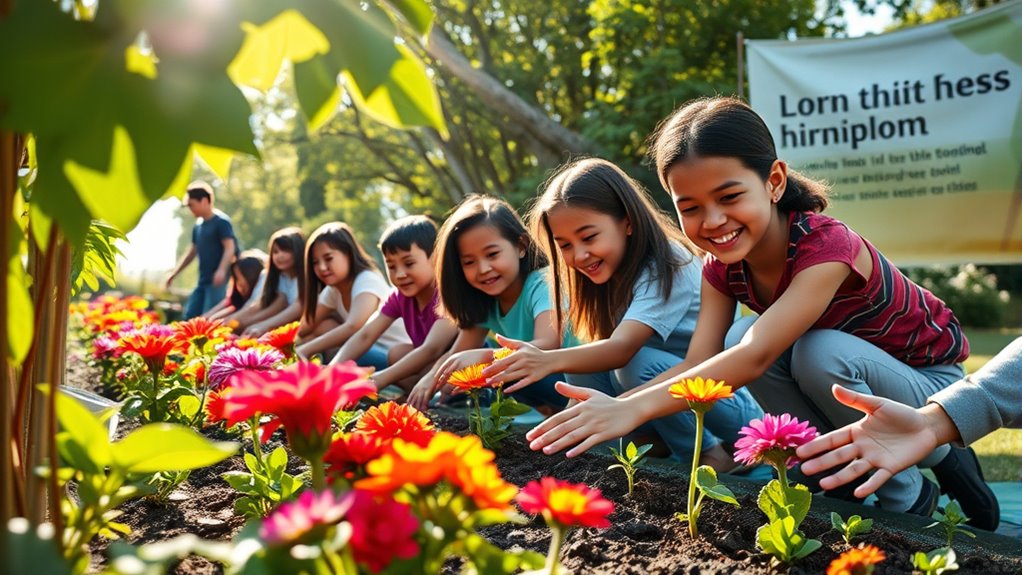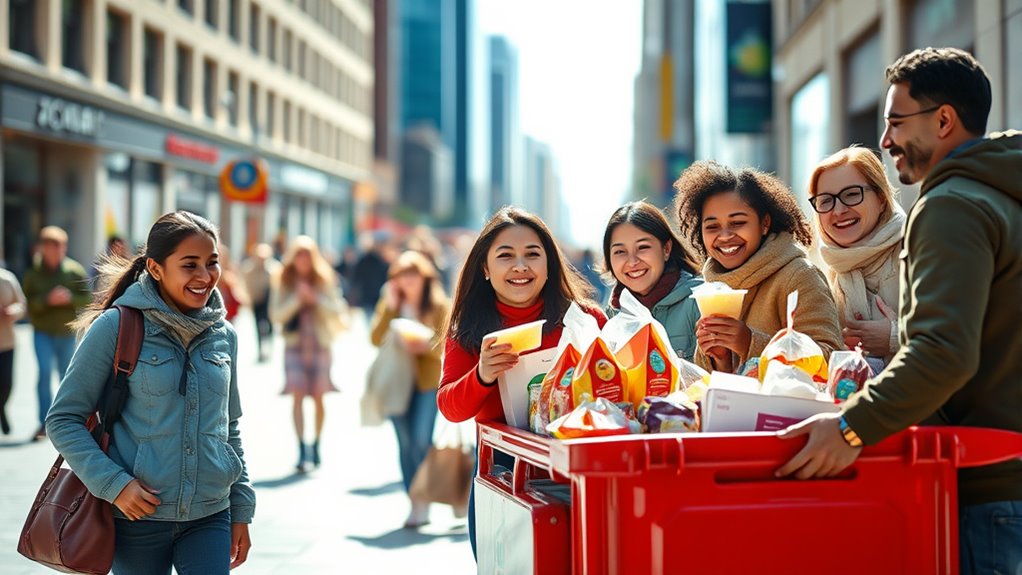When you see acts of kindness that evoke strong emotions, you’re more likely to feel connected and motivated to share them. Emotional contagion spreads positive feelings, while social validation—likes and comments—encourage others to join in. This combination creates a ripple effect that transforms small good deeds into viral movements. If you want to understand exactly how emotions and social cues amplify kindness, keep exploring the fascinating science behind altruistic virality.
Key Takeaways
- Emotional contagion amplifies feelings of empathy, making viewers more likely to share acts of kindness.
- Social validation through likes and shares reinforces the desire to promote good deeds publicly.
- Compelling storytelling and visuals evoke strong emotions, increasing memorability and shareability.
- Combining emotional appeal with social recognition triggers deeper engagement and wider spread.
- Presentation that resonates emotionally and satisfies social needs enhances the virality of altruistic acts.

Have you ever wondered why some altruistic acts spread rapidly across social media while others fade away? The answer lies in the fascinating ways our emotions and social needs drive us to share good deeds. When you see someone perform a kind act, like donating to a cause or helping a neighbor, you don’t just observe it—you feel it. That sensation is rooted in emotional contagion, a powerful force that makes you experience the same feelings as others. Seeing a heartfelt story or a generous gesture triggers your empathy, and suddenly, you’re compelled to share it, hoping to evoke similar feelings in your friends and followers. This emotional contagion creates a ripple effect, where positive emotions spread through networks, encouraging others to act kindly as well. Additionally, the use of visual cues and compelling storytelling can significantly amplify this effect, making the act more memorable and shareable.
Seeing kind acts triggers empathy, spreading positive feelings and inspiring others to share and act kindly.
But emotional contagion is only part of why some acts go viral. Social validation plays an equally vital role. When you share a good deed, you’re not just spreading kindness—you’re also seeking approval and recognition from your social circle. Likes, comments, and shares act as signals that your actions are appreciated and valued by others. This social validation reinforces your behavior, making you more likely to participate in similar acts and to promote them publicly. It’s a cycle that fuels virality; as more people share acts of kindness, the social validation intensifies, creating a collective momentum that elevates these acts from individual actions to widespread movements.
You might notice that emotionally charged stories or visually compelling images get more shares because they tap directly into your feelings and drive you to act. When an altruistic act is presented in a way that resonates emotionally and offers social validation—like a heartfelt video that garners a lot of praise—you’re more inclined to pass it along. Your brain responds to these cues by releasing neurochemicals such as dopamine, reinforcing the desire to share. This creates a feedback loop where emotional contagion amplifies the message, and social validation encourages further sharing, propelling the act into virality.
Understanding these mechanisms helps explain why some good deeds spread like wildfire while others don’t. It’s not just about the act itself but about how it’s presented and how it makes you feel. When an act combines emotional contagion with the promise of social validation, it taps into your deepest instincts for connection and recognition. That’s why certain altruistic stories resonate so strongly—they activate your emotions and satisfy your social needs simultaneously, making you enthusiastic to share and, in turn, help them go viral. Recognizing the role of skin-friendly ingredients in skincare routines can also enhance the emotional appeal of self-care stories, further boosting their shareability.
Frequently Asked Questions
How Do Cultural Differences Influence Altruistic Viral Content?
You notice that cultural differences shape how altruistic viral content spreads. Cultural storytelling and tradition influence what resonates with people, making some acts more shareable in certain communities. When content aligns with local values or customs, it’s more likely to go viral. By understanding these cultural nuances, you can craft messages that connect deeply, encouraging others to share good deeds across diverse audiences and fostering a global sense of altruism.
What Role Does Social Media Algorithm Play in Spreading Kindness?
You might wonder how social media algorithms influence kindness. The algorithm influence is vital because it determines content visibility, highlighting posts that generate engagement. When you share acts of kindness, the algorithm can amplify these messages, making them more visible to others. This increased exposure encourages more sharing and participation, creating a ripple effect. Ultimately, the algorithm plays a essential role in spreading positivity by rewarding and promoting altruistic content.
Can Altruistic Virality Lead to Long-Term Social Change?
Ever wondered if a viral act of kindness can create lasting change? You might be surprised, but altruistic virality can spark long-term social change by inspiring motivational storytelling and boosting community engagement. When people see acts of goodness spread, they’re more likely to participate and sustain positive behaviors. So, yes—these viral moments can plant seeds for a more compassionate society, shaping attitudes and actions over time.
How Do Individual Personalities Impact Sharing Altruistic Acts?
Your personality traits considerably influence your sharing motivations for altruistic acts. If you’re naturally empathetic or extroverted, you’re more likely to share good deeds to connect with others and boost your social reputation. Conversely, if you’re more introverted or cautious, you might share less. Understanding your personality traits helps you recognize what motivates you to share altruistic acts, potentially encouraging more consistent and authentic sharing behaviors.
What Ethical Considerations Exist Around Promoting Kindness Online?
Think of promoting kindness online as planting seeds in a garden—you want them to grow authentically. You must consider privacy concerns, ensuring you don’t invade others’ boundaries or share personal stories without permission. Authenticity challenges also arise, making it essential to avoid exaggerating acts to gain attention. By being honest and respectful, you help foster genuine kindness online, creating a ripple effect that inspires others to act sincerely.
Conclusion
As you share acts of kindness, remember you’re igniting a spark that can light up countless lives. Like ripples on a pond, your good deeds have the power to spread far beyond your reach. Embrace the truth that altruism isn’t just a gift to others, but a catalyst for collective hope. In this interconnected web, your actions become the heartbeat of a more compassionate world—proving that kindness, like love, is truly contagious.










